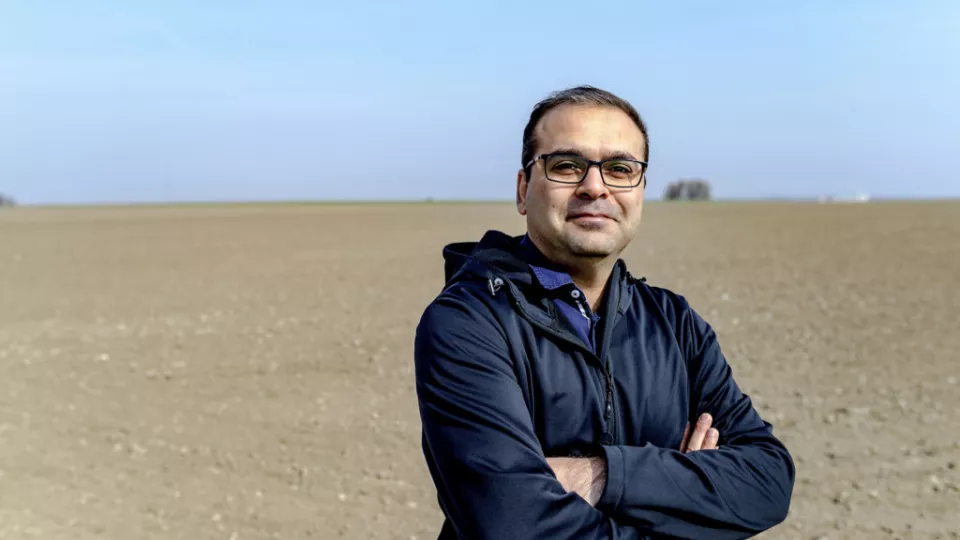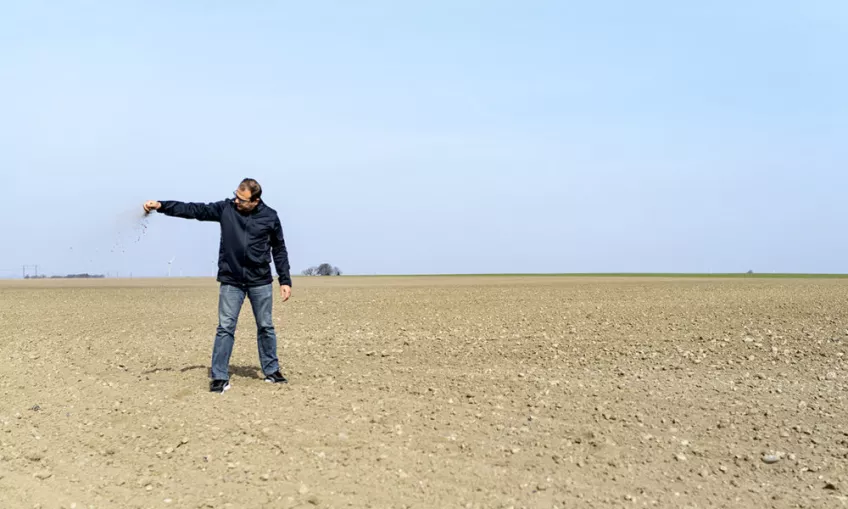– When a dust storm hits it can last up to a couple of days. Schools, offices, and farms close down, and people are unable to go outside, says Hossein Hashemi, assistant professor at the Centre for Middle Eastern Studies and Water Resources Engineering, Lund University. They also have a very negative impact on people’s health and wellbeing since they affect lung capacity and asthma.
The adverse effects of dust storms on health, the environment, and the economy led him and his research colleagues to start up a new research project. It aims to identify sources of dust in the region, places where dust storms have originated/occurred, as a first step in trying to prevent them. So far, they have created a map of the Middle East that shows the source areas and the regions that are most affected. Their preliminary results are astonishing.
– In contrast to what we thought, natural deserts are not hot spots for dust storms anymore. Instead, it is land that has been abandoned by farmers, that is now dry, and lakes that have been shrinking and drying up. And the sources of dust are all over the region, he says.
We need to re-think as to how freshwater should be harvested and managed in the region
He explains that dust storms appear because of interlinked factors comprising land use change and agriculture, drought, conflict, and water management. High demand for food has led to a dramatic expansion of agricultural land in the last few decades. As water is scarce and soil fertility is low in the new agricultural lands, farmers have to abandon their land after a few years, leaving the land devoid of nutrients and vegetation to hold down the sand. An extended period of drought in the region has also caused many farmers to move into the cities, causing more land to become abandoned. The ongoing armed conflict in Syria and Iraq is another factor, as well as the construction of large dams in Turkey, which has cut of the flow of water, to more that 60%, to the rivers Eufrat and Tigris, in upstream Syria and Iraq. Unprecedented dam construction in Iran, over the last four decades, have also caused many salt lakes to disappear becoming the sources of dust storm.
The scarcity of water and poor water management is a factor of special importance, says Hossein Hashemi, particularly since the region has historically been arid, and is projected to get less rainfall and higher temperatures over the next coming decades as a consequence of climate change. Lack of proper water management has impacted the farmers’ ability to farm the land and has led them to rely heavily on wells, sometimes drilled illegally, which depletes the groundwater reserves and also impacts the water level in nearby lakes.
Several major lakes in the region such as Hamoun Lake in Iran has already dried out, and many others have started drying up, Lake Urmia. This is problematic from two aspects, according to Hossein Hashemi. One is that the lake, once it is dried up, becomes a source of dust, a place where dust storms can appear. The other is that as the water disappears, the lake turns into salt flatland. The salt can then travel up to hundreds of kilometers, destroying crop and agricultural lands in places far away from the actual lake.
– We need to re-think as to how freshwater should be harvested and managed in the region if we are to prevent dust storms from appearing and increasing in frequency. Especially since climate change and population growth will only exacerbate the problems, he says.
By improving water management and water harvesting techniques, he believes that farmers will be able to farm their land without exhausting existing water reserves. This would involve developing ancient techniques such as floodwater harvesting that diverts the floodwater to the fields, during torrential rainfalls; tracing, where slopes in the mountain are cut off to resemble stairs to water the land; and restoring the ancient qanat systems (gently sloping underground channels that transport water from an aquifer or water well to the surface for irrigation and drinking) in place in many countries in the region.
– By focusing on modernizing these old techniques, which farmers have indigenous knowledge of how to use and manage, we can involve them directly in maintaining their own land and water resources. They are also sustainable, environmentally friendly, and require no expensive tools or training.
This is crucial, and a reason why focusing on old techniques for water management is more important in preventing dust storms than say the construction of large dams, desalination plants, or importing virtual water (in the form of food), according to Hossein Hashemi. Dams, for example, are large structures that require expert management and can permanently inundate the surrounding area, whereas desalination (whereby the salt is extracted from seawater) bring environmental concerns in the form of the water being of a higher temperature and saltier when it is returned to the sea. Importing virtual water is also fraught with a long-term strategy since the region can become overly dependent on the fluctuating prices of the world market.
But, he emphasizes that improving water management in a region that is as diverse as the Middle East will be a huge challenge and an effort that will include interdisciplinary research involving fields such as environmental engineering, health, politics, economy, sustainability, and development.
– I see our research as the beginning. By identifying where dust storms have appeared and can appear, we can alert the world to the fact that this is a growing problem, where there is a need for immediate action and that how to approach it. I hope that, in spite of the ongoing conflict and huge diversity in the region, our research can contribute to new collaborations that can attempt to tackle the underlying problems of land use change and water scarcity, he concludes.


